We've been toying around with Asus' new Eee Box B204 for a few days now, and it's time to wrap up the review for our Sunday edition. We don't actually have a Sunday edition per se, but this thing is more leisurewear than hardware, so I'm thinking Sunday will do just fine.
The old Eee Box B202 has been around for quite a while, and new incarnations, such as our B204 or the B206, basically look the same. Externally, the only distinguishing feature is the HDMI connector in lieu of DVI. Mind you, not changing the design is not a bad thing. The Eee Box is without a doubt the best looking nettop out there, so there's really no point in messing with the looks.
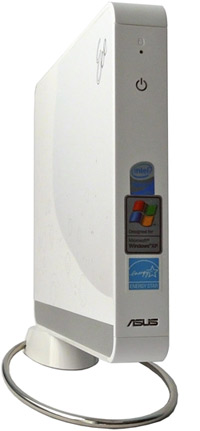
However, once you take a peek at its intestines, you soon realize the B204 is quite a bit different than the B202. Yes, it's still based on the Atom N270/945GSE combo, it has 1GB of memory and 160GB of storage, but now it features discrete graphics, courtesy of ATI. We're not talking about anything with loads of graphics muscle. Asus went for the HD3450 in mobile flavour, with 256MB of DDR2 memory. It's still a DX10 part, and it's got UVD and audio, so it's well suited as a mate for the HDMI out. Oddly, Asus even installed a small battery, and the B204 can run for a few minutes with no power before it goes into hibernation. This probably makes it the only desktop with a battery on the market, and we're not sure this feature will draw a crowd.
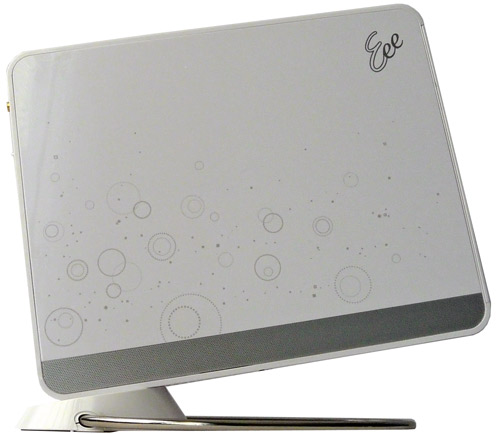
The whole contraption measures 222x178x27mm, and it weighs about a kilo. Its footprint, however, is a bit bigger, thanks to the cute, angled metal stand. It's fixed in place with a large screw, much like an LCD stand, and it feels more than adequate to handle the weight, or lack thereof. Once you remove the stand, you can access the 2.5-inch Seagate hard drive in seconds. Practical, but you won't be changing hard drives on a daily basis anyway.
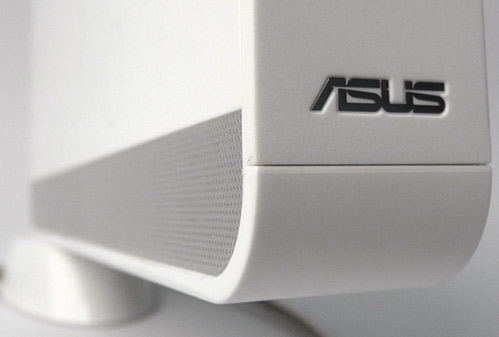
Apart from making the Eee Box look a bit Wii-ish, the stand also has a more down to earth purpose. Thanks to the vertical layout, and the space between the stand and surface, it helps airflow. In fact, the vertical design helps so much that the Eee Box is practically completely silent no matter what you do with it.
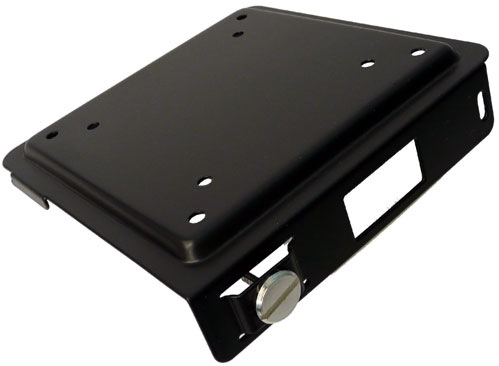
Also, the B204 ships with a standard TV mount, which will allow you to hide it from prying eyes behind your widescreen. Considering it's a damn good looking piece of hardware, we really don't know why you would want to do that. You also get a great remote, pretty well thought through and good looking, too. It works well with the included Eee Cinema software. Although Eee Cinema is pretty a pretty nice software suite, simple to use and well designed, it's still rather limited in terms of format support.

There's a downside to the sleek design, too. Once you connect the power adapter, keyboard and mouse, wireless antenna, HDMI, LAN, and finally, the infrared receiver, which also eats up a USB slot, you'll need a way to hide the cable jungle behind something, and a 27mm wide chassis just won't do the trick.
Here's where we hit the first snag. There are only two USBs at the back, which means that after you've plugged in the IR receiver, you're down to just one. So you have to choose your keyboard and mouse carefully, i.e. get a wireless desktop, not two separate devices. This will limit your choice if you're after some fancy keyboard or mouse, which isn't offered in a kit.
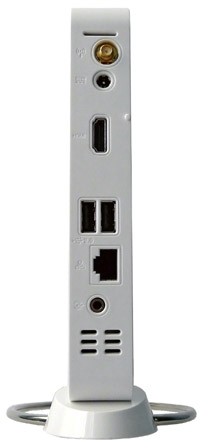
You can also get round this with a USB hub, which will, unfortunately, add one more ugly cable to your tiny nettop. Still, the decision to ship a USB infrared receiver instead of a built in one, was a right one, as it provides you with a lot more flexibility in setting up your media center.
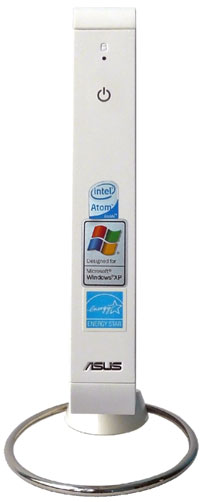
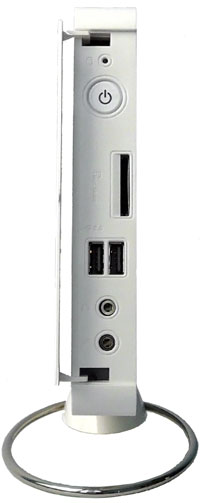
The connectors on the front side are hidden from sight by a flimsy plastic cover. These include 3.5mm audio in and out connectors, two USBs and a memory card reader. Like the Acer Revo, the Eee Box B204 lacks a digital audio out. The power button and power led are also at the front, and you have to open the cover to access them. Although you probably won't be using the memory card reader and the 3.5mm connectors on a regular basis, the decision to place the power button behind the cover was a triumph of style over substance.
Performance, Synthetic Benchmarks
In terms of performance, the Eee Box is like most Atom machines we've come across so far, although it's worth pointing out that Asus went for a mobile Atom N270. Acer and MSI use desktop, Atom 230 CPUs in comparable products. This is no big deal, as both are clocked at 1.6GHz and run at the same FSB. More importantly, Acer packs 2GB of memory on their Revo, although the Ion IGP on the Revo takes a bite out of the system memory, which is not the case with the Eee Box B204.
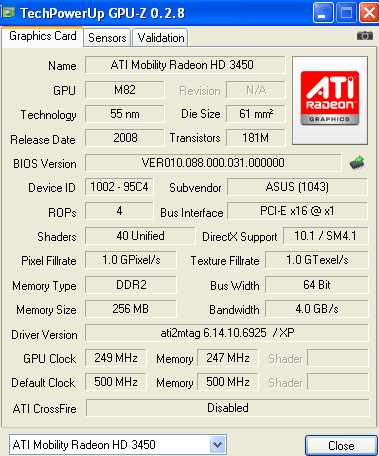
A quick look at GPU-Z reveals that the Mobility HD3450 runs at up to 500MHz, and it has 256MB of DDR2 at 500MHz.
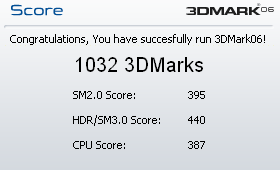
Surprisingly, in 3Dmark 06 the Ion has the upper hand. The B204 scores 1032 marks, and the CPU score is 387, while the Ion gets 1306 marks and a CPU score of 487. It must be noted that Ion was tested under Vista, while the Eee Box ships, and was tested on, XP.
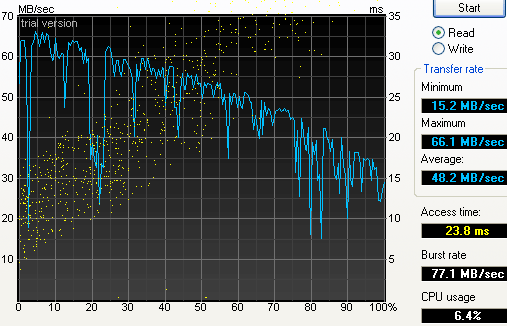
In HD Tune, the Seagate hard drive gets average scores, with access times slightly higher than what we've come to expect from netbook drives.
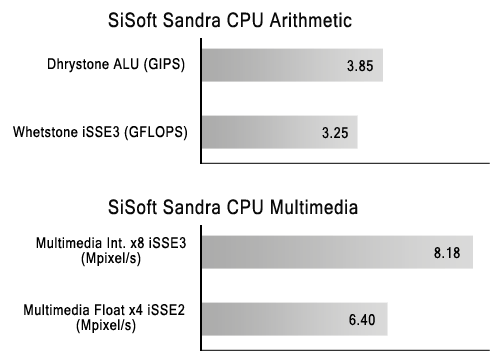
Sandra CPU scores were also Atom-average, but memory bandwidth was rather low, even for an Atom-based system.
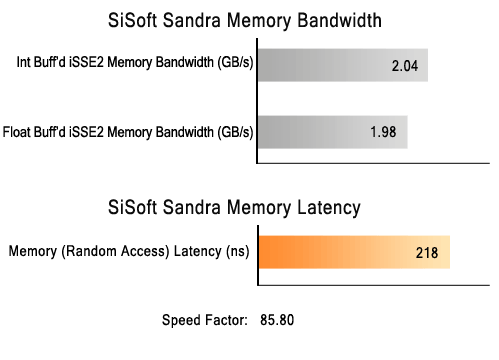
Overall, the Eee Box B204 seems to be a bit slower than the Ion-based Acer Revo, but as we already said, the Revo runs Vista, so you should take some of these scores with a grain of salt. In real life, the differences would be negligible.
Video Playback
This is where the HD 3450 should make a world of difference, but unfortunately it fails to deliver consistent results. Now, it's worth pointing our that we're talking about performance out of the box, and that we got a pre-production sample, and Asus has probably fiddled with it a bit more over the past weeks.
The B204 struggles with some 720P formats, and 1080P in most formats is a bridge too far for the little Eee. Without tweaking, 720P Matroska, better known as .mkv, was not viewable, and neither were WMV or QuickTime. If you're thinking installing new drivers could help, you're right, but you can't download ATI's Catalyst 9.4, as it won't run on the Asus. You have to get vendor specific drivers from Asus, and once you install them, 720P is possible, albeit with relatively high CPU utilization. However, 1080P is still impossible to enjoy.
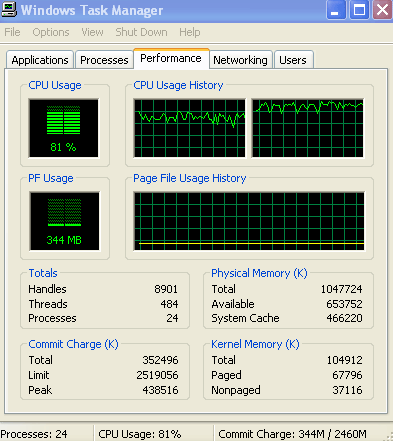
CPU utilization during 720P .mkv playback
In order to harness the power of ATI's UVD on the HD 3450, you need to use DXVA, which, in XP, is only available through Catalyst 9.4. The latest build of Media Player Classic Home Cinema (1094) supports DXVA, and so do a number of commercial players, but you still have to watch out for supported formats, codecs etc. It's all a bit too messy for a rig aimed at the clueless consumer market, not at enthusiasts who would try to play 1080P on a Spectrum Z80. If you struggle with HD playback, here is a nice howtodo.
Needless to say, HD support is anything but comprehensive, although we're sure Asus will offer some improvement through support software and future driver versions. Also, we believe Vista would have been a much better choice for HD, and it would be more future-proof. Unfortunately, the idea of running Vista on any single-core Atom is painful, ugly and slow, tantamount to letting me race Lance Armstrong, uphill, after a night out on the town.
Conclusion
Obviously, the conclusion ends up being a bit, well, inconclusive. The HD 3450 should be capable of delivering much more performance in terms of HD decoding, and we're sure that Asus, or a lone, rogue geek, will eventually put it to good use, and squeeze out that extra ounce of performance needed to play 1080P in all flavours. True, it has a bit less graphics power than the Ion, but in spite of that we believe it should be able to take care of HD content. However, to provide consumers with best possible HD experience, Asus should have used an HD 4000 chip which has an improved UVD engine, 7.1 audio, and even an HD 43xx should be on par with Ion.
Compared to the Acer Revo, the Eee Box B204 is a bit smaller, more stylish, has a nice remote, and most importantly, it's almost silent, whereas the Revo is pretty noisy. The Revo on the other hand has more RAM (although the Eee Box B204 has discrete graphics with 256MB of memory), a slightly faster CPU/chipset combo, and most importantly, it runs HD out of the box, without tweaking, downloading and installing drivers and watching out for codecs.
With 160GB hard drives, both systems lack storage as media center solutions, especially in a time when some vendors offer up to 500GB on their nettops, which don't have HDMI and aren't being marketed as media centers. At least Revo has an eSATA connector, so you can add external hard drives with the speed of an internal connection. If you've got a NAS, this isn't an issue, but a USB only connection is slow, although it will suffice for playback.
In his Revo review, Eliot said he liked the concept of a small, power efficient Atom-based media center, and he's not alone, I like the idea as well. Both Asus and Acer have offered interesting alternatives to full blown HTPCs or stand alone media players, but we found both to be far from perfect. Acer went with Ion and Vista, Asus tried a discrete Radeon and XP. Vista helps out a great deal in HD video playback, but you end up with an overbloated OS on an underpowered machine. With Asus, you get a more sensible OS, but you pay dearly, as it's crippled in terms of HD performance, at least until Asus manages to fix some issues or until you install Windows 7 RC.
In the end all we can say is that both of these systems bear promise, but we would advise you to wait a few weeks for the vendors to mend some flaws, and offer SKUs with more storage or even dual-core Atoms. Better yet, if you're not in a hurry, wait for Windows 7, it's just a few months away, and there's better things to do in the summer than watch movies at home anyway.

